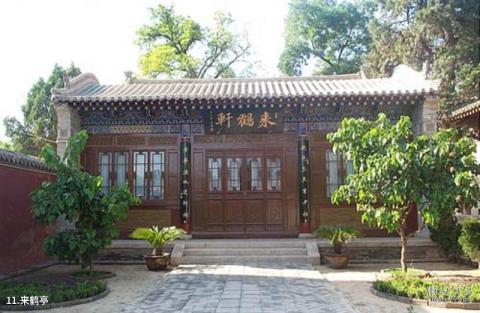
Introduction to Laihe Pavilion: Laihe Pavilion is located in the west of Xiantian Hall and forms its own courtyard. The east wall of the pavilion is the west wall of the temple. In the fourth year of Qianlong's reign in the Qing Dynasty (AD 1739), Li Hong, the magistrate of Qinzhou, presided over the reconstruction of Fuxi Temple. Suddenly, a white crane flew over the temple cypress. The ancients regarded cranes as a symbol of good fortune, longevity, and good luck, so a crane pavilion was built to commemorate this. The status of the reconstruction is unknown. In the 20th year of Guangxu (AD 1900), "Longnan Emperor Wenzong" Ren Qixing lived and died. Scholars privately named him "Wen Jie Gong" and built Heting as his ancestral hall. So the pavilion was also called Ren Wen Jie Gong's ancestral hall. The couplet "There are old cypresses towering in the sky; a new temple is built all over the ground with yellow flowers" refers to this. In the 10th year of the Republic of China (1921 AD), the Cungu Society and the compilation bureau of county chronicles for the fourteen counties in Longnan were established in the pavilion. At that time, Mr. Chengyun and Mr. Haer were in charge of the lecture club, preaching and teaching. Feng Guorui, Hu Chubai, Zhao Yaochen, etc. were all primary school teachers. They listened to lectures and took exams, and later they all became scholars, among which Feng Guorui was the most outstanding.
